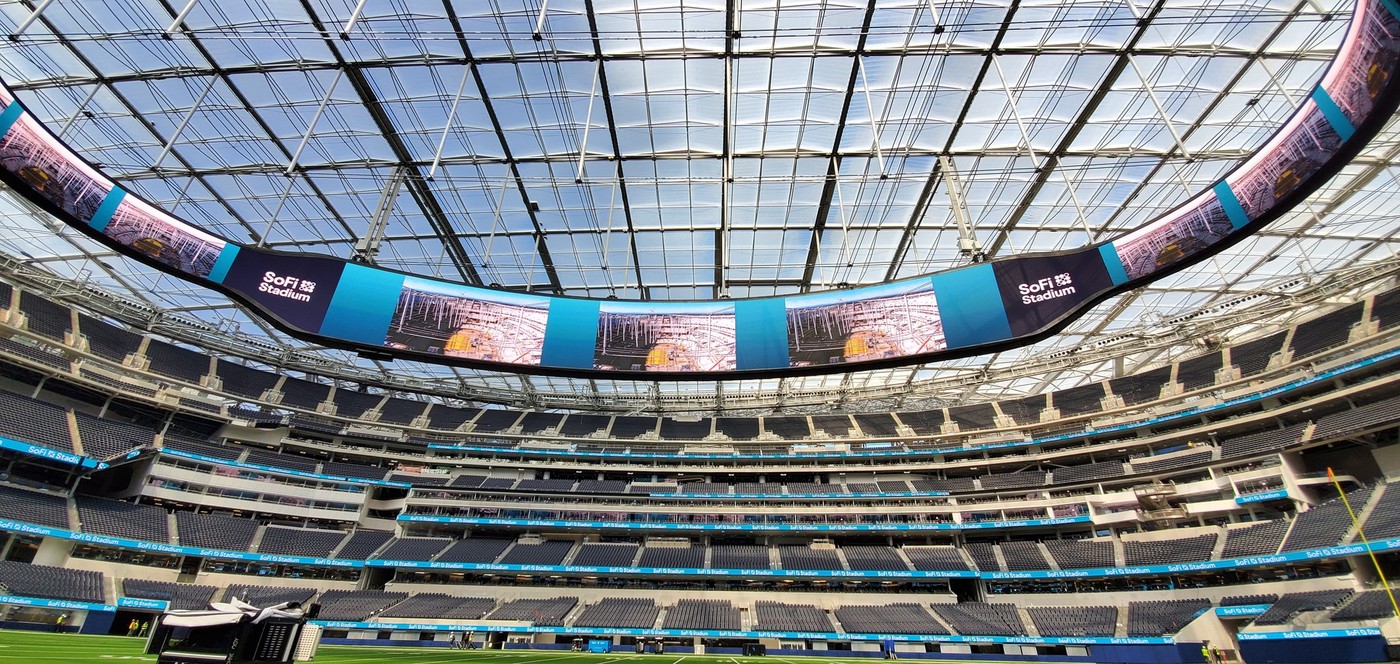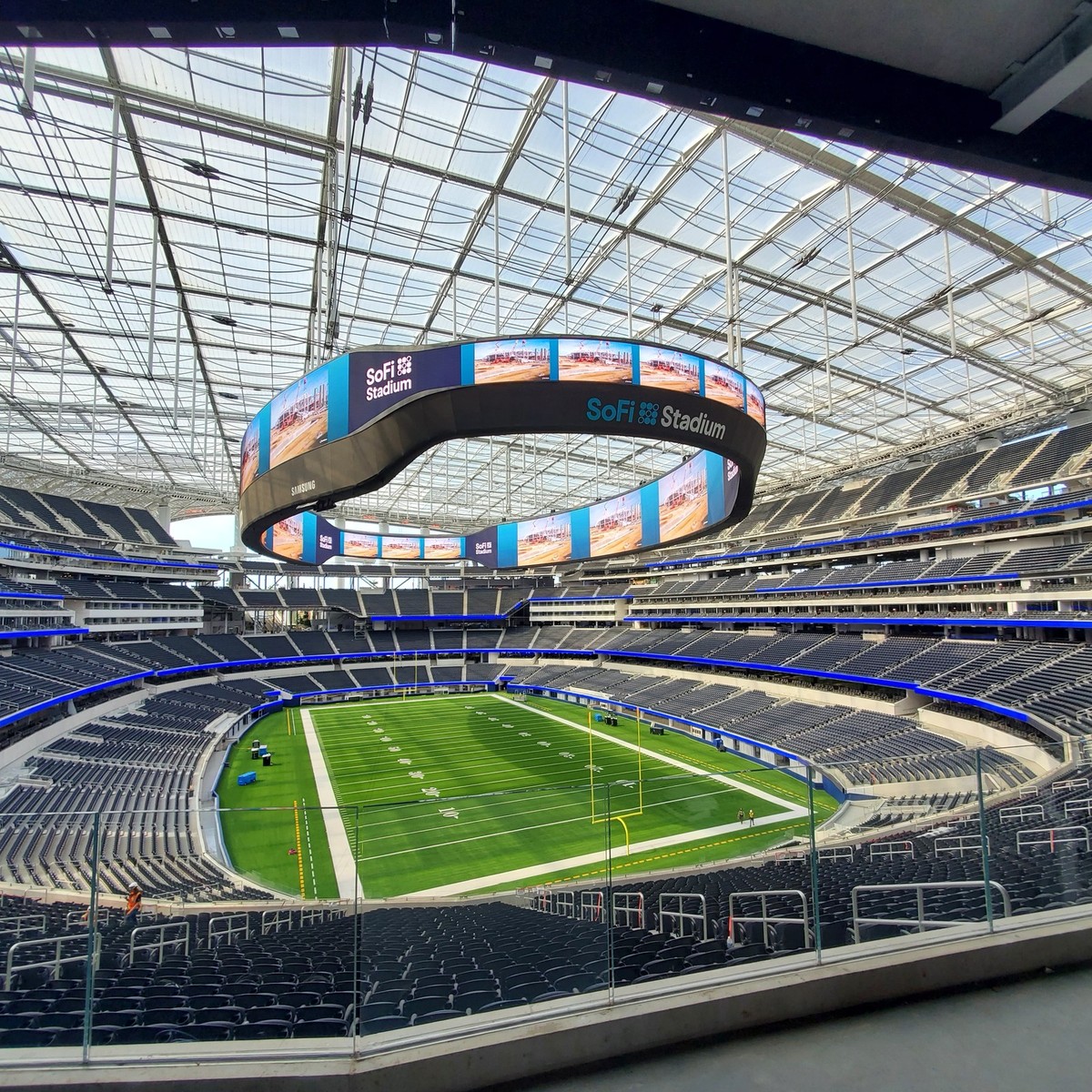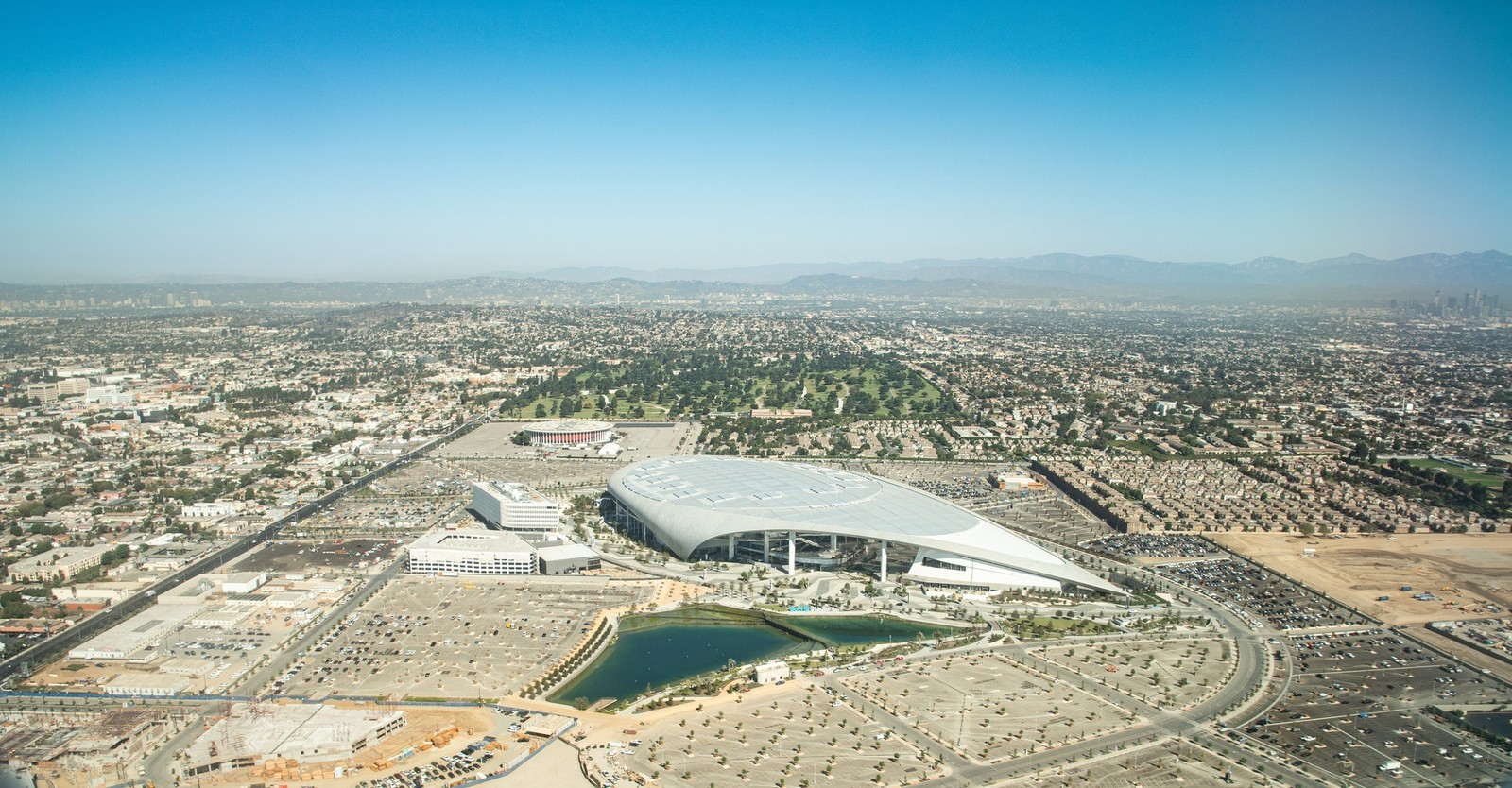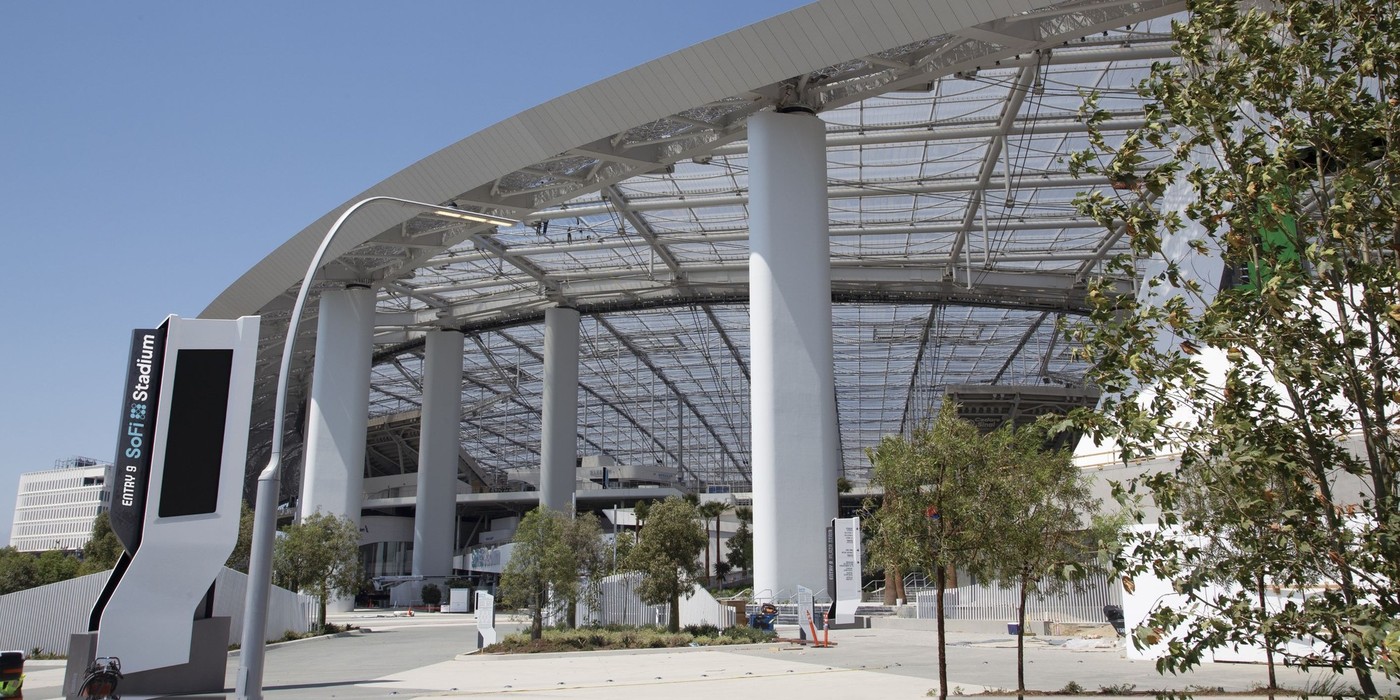New stadium: Multiple records broken before first major crowd
source: StadiumDB.com [MK]; author: michał
 SoFi Stadium is the most expensive, has the largest floor surface, roof and giant screen worldwide. It’s also almost enclosed and almost open-air at the same time. A lot can be said about one of the world’s most important stadiums in the coming years.
SoFi Stadium is the most expensive, has the largest floor surface, roof and giant screen worldwide. It’s also almost enclosed and almost open-air at the same time. A lot can be said about one of the world’s most important stadiums in the coming years.
Advertisement
Los Angeles had no NFL team after 1995, which made the metropolis the largest unclaimed market for professional football. It even became quite common for teams to threaten departure for Los Angeles during negotiations with their local authorities, usually over public subsidies. And yet the visions we’ve seen for Carson stadium or Farmers Field (just last two out of many more) never came to fruition. But while for many years relocation to Los Angeles was just gossip, this changed in 2014. That’s when billionaire Stanley Kroenke decided to buy a significant chunk of land under the recently defunct Hollywood Park horse racing track.
Along with other investors and with massive support from the NFL, Kroenke drew up plans for a 120-hectare (298-acre) mixed use complex centred around a new stadium. Departing from the aged model of main venue surrounded by oceans of parking spots, the developers envisioned 2,500 houses, 83,600 m2 (900,000 square feet) of retail, 74,300 m2 (800,000 square feet) of office spaces, a hotel with 300 rooms and 1 ha (2.5 acres) of leisure and green areas, divided into 25 smaller sections.
The Inglewood location lies just under 4 km (2.5 mi) from the Los Angeles International Airport, which forced serious compromises, considering the development’s scale. The stadium’s height was reduced to roughly 30-35 metres (over 100 feet), which forced bulk of the auditorium to be located below ground level. Also, Kroenke had to finance infrastructural upgrade ($29 million) for the airport in order to avoid radar interruptions due to the stadium. And even then, with the green light, no tower cranes were allowed on the construction site, making work even more challenging.
The design was awarded to HKS, famous for several major stadium projects, including the record-breaking AT&T Stadium in Arlington, TX. The prime goal was maximum flexibility of the new stadium, not limiting it to only football and other conventional large events. Thus the creation of more than just a stadium. Under one roof HKS managed to fit the main stadium with 70,240 seats (expandable by 30,000 more for major events), an indoor live event venue with 6,000 seats and a covered plaza of 2.5 acres (1 ha) between the two, also available for events.
The stadium takes inspiration in the Californian indoor-outdoor lifestyle. As confirmed by HKS, the investor asked for a stadium that would feel outdoors while providing all the benefits of a closed venue. Thus the almost transparent permanent dome and yet almost no external walls. Second inspiration was the Pacific Ocean, which led to the wave-like shape of the building, futuristic and simple at the same time. The form is complimented by detailed landscaping of semi-open terraces leading to the auditorium.
Main form of the stadium has contact with the ground only in three corners of the building. Here, fans can see the decorative detailing. Outer edge of the roof and most of the opaque facades are covered with triangular panels of perforated anodised aluminium. A total of 34,789 were ordered and most of them are also equipped with LEDs to bring the stadium alive in the evening. By day, in turn, the panels’ perception depends on the sun’s position, between snow white at noon to red during sunset.
 © Samsung
© Samsung
The largest decoration, in literal terms, is the stadium’s elaborate canopy, resting on 37 primary columns. Although bulk of the roof is based on tensile cable technology, numbers given by the roof’s manufacturer are stunning. 67,000 tons of materials were apparently used, with the weight of primary steel trusses at 20,000 tons and cables at 1,400 tons. The entirety is independent from the stadium beneath and can withstand strong earthquakes without risking safety of people potentially gathered below.
Covered with single-layer ETFE, the roof ensures proper sunlight access while also limiting heat transfer and potential blinding effect. Comprised of 302 segments, the canopy covers 75,000 m2 and is thus the largest of its kind. Most of the roof is also etched with LEDs in order to create displays visible from planes landing at LAX. Interestingly, the roof also has 46 mechanical windows (32 large and 14 smaller) in order to aid natural ventilation when needed.
 © Samsung
© Samsung
Beneath the roof is another major achievement, typical of US stadiums: a record-breaking giant screen, marketed as ‘the oculus’. The panoramic, double-sided structure weighs 1,000 tons and offers 6,500 m2 of display space (4K, 80 million pixels), reaching the length of 109 m (122 feet) and height of 12 m (40 feet). Interestingly, the screen is integrated with the stadium’s sound system, with 260 speakers built in, just like 56 5G internet antennas.
Under the record-breaking roof and screen is one more record to set: floor space. In total the building offers 288,500 m2 (3,100,000 square feet) for various uses. These range from underground parking, 12 different hospitality clubs, 260 private boxes, 7 suite experiences to semi-open concourses for fans. It’s no wonder a massive floor space is needed when even the production of giant screen content requires 80 people.
The stands were divided into four major tiers, divided by strips of premium seating. In total the stadium offers a truly stunning 13,000 premium places, promising high revenue. The lowermost premium locations are on field level, the uppermost ones at the 8th floor, allowing guests to admire the panoramic view inside and out.

There’s one more record that the Inglewood giant managed to break. It’s officially the most expensive stadium in history. Including secondary functions of the project’s first phase (stadium and event arena, nearby roads, landscaping, ancillary buildings) estimates vary between $5-6 billion. As for the stadium itself, it may be less lavish but still managed to break the record already upon groundbreaking. Back in 2016 it was estimated at $2.6 billion, more than any other previously. By May of 2020 the price tag went beyond $3.4 billion.
The expense seems even painful when taking into account that the project slipped from opening in 2019 to 2020, in the middle of a pandemic. But the lack of revenue in early days is to be compensated. Well before completion the building had its stunning naming rights deal with SoFi (valued at $400-600 over 20 years), groundsharing agreement between Rams and Chargers, hosting rights for the 2022 Super Bowl, the 2023 College Football Playoff National Championship or the 2028 Olympic ceremonies, to name a few.
Author: Michał Karaś
Advertisement
 StadiumDB
StadiumDB ©
©  ©
©